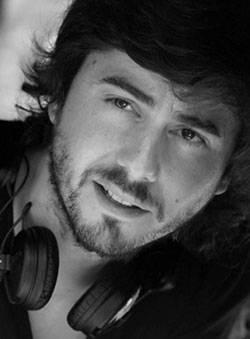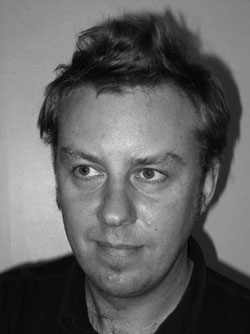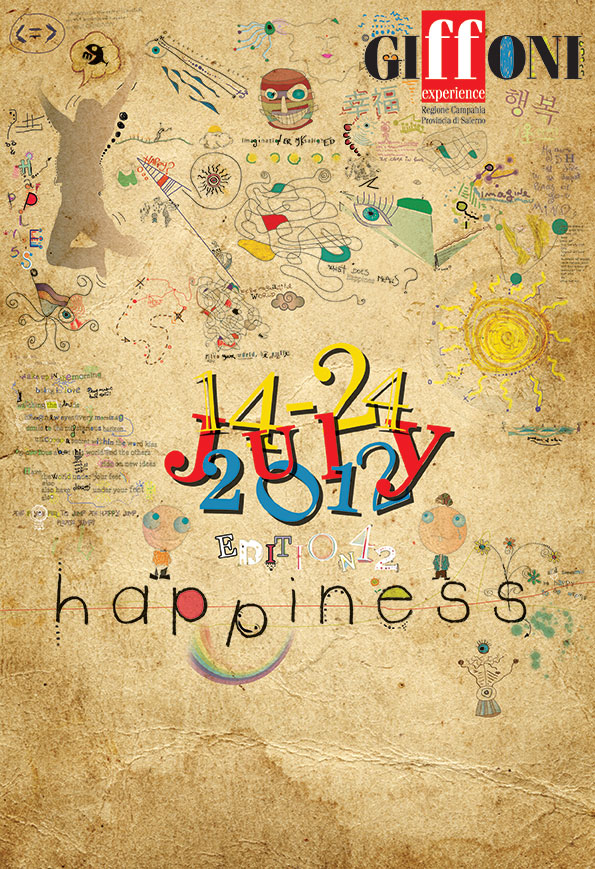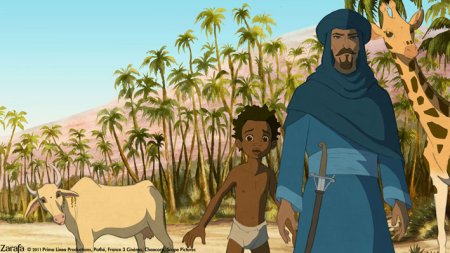 Rémi Bezançon
Rémi Bezançon
Born 1971, Paris. He studied at the ESRA (École Supérieure de Réalisation Audiovisuelle) and the École du Louvre. In 1997 he made his first short, LITTLE ITALIE. Afterwards he directed three feature films: LOVE IS IN THE AIR (MA VIE EN L’AIR, 2005); THE FIRST DAY OF THE REST OF YOUR LIFE (LE PREMIER JOUR DU RESTE DE TA VIE, 2008, nominated for two César Awards); A HAPPY EVENT (UN HEUREUX ÉVÉNEMENT, 2011). ZARAFA is his first animated work.
Rémi Bezançon
Nato a Parigi nel 1971. Studia alla ESRA (Scuola Superiore di Realizzazione Audiovisiva) e alla École du Louvre. Nel 1997 gira il suo primo corto, LITTLE ITALIE, cui seguono tre lungometraggi: LOVE IS IN THE AIR (MA VIE EN L’AIR, 2005); THE FIRST DAY OF THE REST OF YOUR LIFE (LE PREMIER JOUR DU RESTE DE TA VIE, 2008, candidato a due premi César); A HAPPY EVENT (UN HEUREUX ÉVÉNEMENT, 2011). ZARAFA è il suo primo film d’animazione.
 Jean-Christophe Lie
Jean-Christophe Lie
Born 1970, France. He studied at the École des Beaux-Arts in Toulouse and at the CFT Gobelins. Then he worked as an animator at Disney Studios in Montreuil, with Sylvain Chomet for THE TRIPLETS OF BELLEVILLE (LES TRIPLETTES DE BELLEVILLE, 2003), with Michel Ocelot for KIRIKOU AND THE WILD BEASTS (KIRIKOU ET LES BÊTES SAUVAGES, 2005). In 2008 he made his first short animation film, THE MAN IN THE BLUE GORDINI (L’HOMME À LA GORDINI), which screened in Cannes, was nominated for a César and won two awards at the Annecy animation film festival.
Jean-Christophe Lie
Nato in Francia nel 1970. Studia all’Accademia di Belle Arti di Tolosa e al CFT Gobelins. In seguito lavora come animatore per la Disney di Montreuil, con Sylvain Chomet per APPUNTAMENTO A BELLEVILLE (LES TRIPLETTES DE BELLEVILLE, 2003), con Michel Ocelot per KIRIKÙ E GLI ANIMALI SELVAGGI (KIRIKOU ET LES BÊTES SAUVAGES, 2005). Nel 2008 dirige il suo primo corto d’animazione, L’HOMME À LA GORDINI, presentato a Cannes, candidato ai premi César, vincitore di due premi al festival di Annecy.
Directors’ statement
Rémi Bezançon
The story of Zarafa, the first giraffe in France, has always fascinated me, given that it touches on all the themes that are dear to me: handing things on, friendship, and the passage of time. I wanted to demonstrate that freedom is the most important thing in life. Some people are still fighting for theirs. The film also tackles themes like friendship, the search for the father and the notion of promising something, but without moralizing. But I nonetheless didn’t hold back from being rather caustic regarding the court of Charles X. The critique of the abuse of power is obvious. Beyond that, I slipped in a few slightly more “educational” elements for children. I’d love it if, when kids come out of the movie, they ask their parents what Buddhism is. At a certain point, all children suddenly become fully aware of life and death and these aren’t simple notions to explain. This film might help some people openly tackle that dialogue.
Jean-Christophe Lie
I was totally won over by this fascinating story that has philosophical elements and yet is based on real historical events. Especially thanks to the solid construction of the screenplay certain distinct memories of my childhood reading resurfaced: Saint-Exupéry, Noah’s Ark, Jules Verne, and especially Victor Hugo, due to the historical, social and philosophical dimension of his work. As far as I’m concerned, as a graphic storyteller, anchoring the story in the real world was paramount. Names like Gustave Daumier and romantic artists of the period such as Géricault and Delacroix came to mind, and were a starting point for creating the graphic universe. I chose 2D as a technique, since it’s more raw, textured look and is better suited to the period. I was delighted that Rémi chose to film in cinemascope. It gave us the opportunity to get the most out of the wide open spaces and the journey in general. The directing decisions were simple: few camera movements or special effects, which could take away from the narrative. The film’s palette employs the naturally warm colors of Africa, and the early light and somber, cold hues in Paris.
Dichiarazioni dei registi
Rémi Bezançon
Sono sempre stato affascinato dalla storia di Zarafa, la prima giraffa giunta in Francia, perché affronta temi a me cari: le radici, l’amicizia, lo scorrere del tempo. Volevo dimostrare che la libertà è la cosa più importante nella vita. Alcune persone combattono ancora oggi per averla. Il film affronta anche altri argomenti, come l’amicizia, la ricerca del padre, il tema della promessa, ma senza moralismi. Non ho risparmiato note polemiche sulla corte di Carlo X, con l’ovvia critica agli abusi di potere. In più, sono finito su alcuni temi un po’ più “didattici”. Mi piacerebbe che i bambini, dopo la visione, domandassero ai genitori cos’è il buddismo. A un certo punto tutti i bambini diventano coscienti della vita e della morte, che non sono concetti semplici da spiegare. Questo film potrebbe aiutare ad affrontare apertamente questo tipo di dialogo.
Jean-Christophe Lie
Sono stato conquistato da questa storia appassionante che contiene in sé elementi filosofici ed è ispirata a eventi storici realmente accaduti. La solida struttura della sceneggiatura mi ha riportato alla mente alcune letture d’infanzia: Saint-Exupéry, l’Arca di Noè, Jules Verne, e soprattutto Victor Hugo, per il carattere storico, sociale e filosofico della sua opera. Come narratore grafico, ritenevo fosse fondamentale ambientare la storia nel mondo reale. Mi sono tornati alla mente nomi di pittori come Gustave Daumier e di altri artisti romantici del periodo, come Géricault e Delacroix, che sono stati un punto di partenza per l’universo grafico del film. Ho scelto la tecnica del 2D, perché più pura, naturale, più adatta al periodo. Sono stato entusiasta del formato panoramico, scelto da Rémy: ci ha dato l’opportunità di ottenere il massimo dagli spazi aperti e dal viaggio in generale. Le scelte di regia sono state semplici: pochi movimenti di macchina o effetti speciali, che avrebbero potuto penalizzare il racconto. La gamma di colori impiega le tinte naturalmente calde dell’Africa, e quelle chiaroscurali, fredde di Parigi.












 Rémi Bezançon
Rémi Bezançon Jean-Christophe Lie
Jean-Christophe Lie